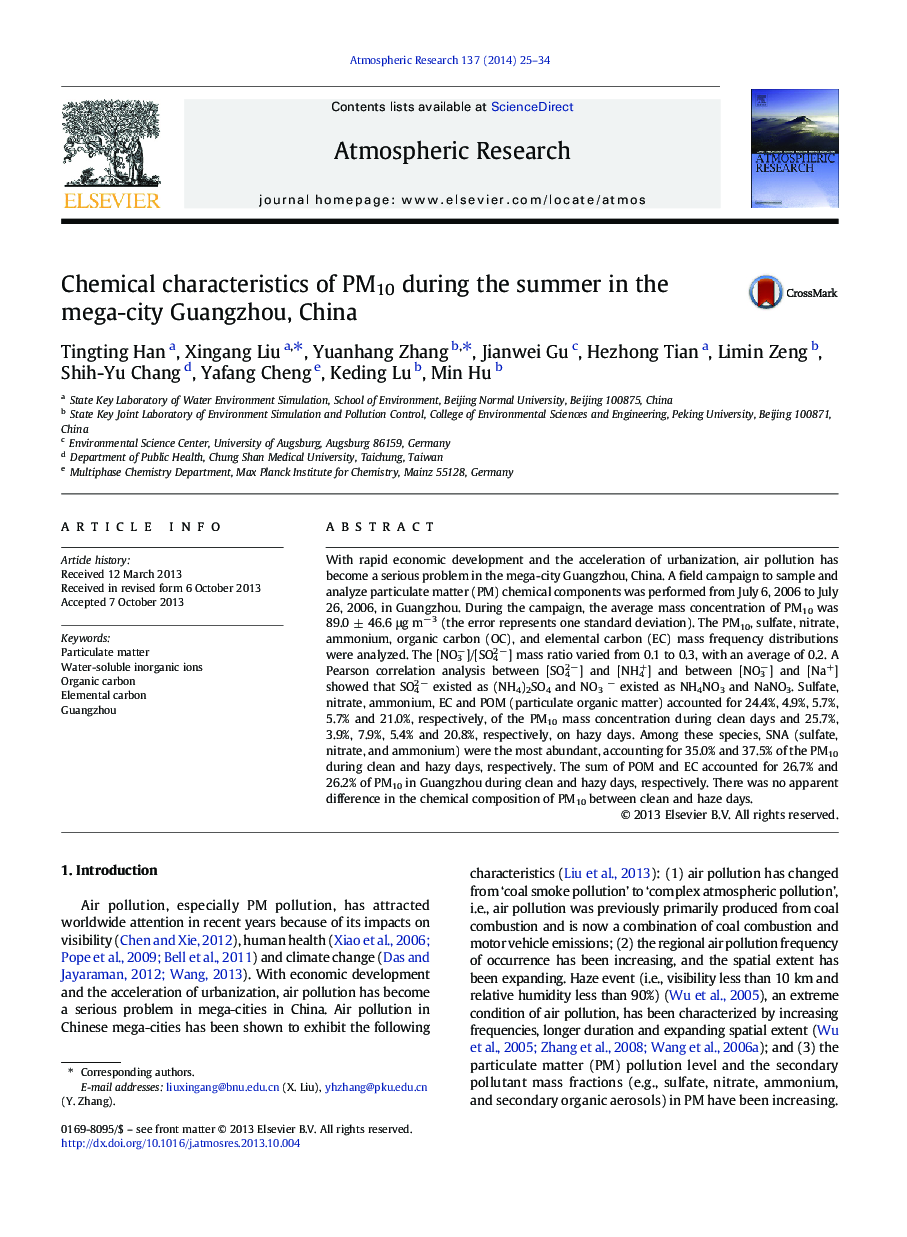| Article ID | Journal | Published Year | Pages | File Type |
|---|---|---|---|---|
| 4449928 | Atmospheric Research | 2014 | 10 Pages |
•Mass frequency distribution for PM10 and chemical components were analyzed.•Mass proportion of chemical components was analyzed under clean and hazy days.•The chemical existing form of SO42 − and NO3− were investigated.
With rapid economic development and the acceleration of urbanization, air pollution has become a serious problem in the mega-city Guangzhou, China. A field campaign to sample and analyze particulate matter (PM) chemical components was performed from July 6, 2006 to July 26, 2006, in Guangzhou. During the campaign, the average mass concentration of PM10 was 89.0 ± 46.6 μg m− 3 (the error represents one standard deviation). The PM10, sulfate, nitrate, ammonium, organic carbon (OC), and elemental carbon (EC) mass frequency distributions were analyzed. The [NO3−]/[SO42 −] mass ratio varied from 0.1 to 0.3, with an average of 0.2. A Pearson correlation analysis between [SO42 −] and [NH4+] and between [NO3−] and [Na+] showed that SO42 − existed as (NH4)2SO4 and NO3− existed as NH4NO3 and NaNO3. Sulfate, nitrate, ammonium, EC and POM (particulate organic matter) accounted for 24.4%, 4.9%, 5.7%, 5.7% and 21.0%, respectively, of the PM10 mass concentration during clean days and 25.7%, 3.9%, 7.9%, 5.4% and 20.8%, respectively, on hazy days. Among these species, SNA (sulfate, nitrate, and ammonium) were the most abundant, accounting for 35.0% and 37.5% of the PM10 during clean and hazy days, respectively. The sum of POM and EC accounted for 26.7% and 26.2% of PM10 in Guangzhou during clean and hazy days, respectively. There was no apparent difference in the chemical composition of PM10 between clean and haze days.
